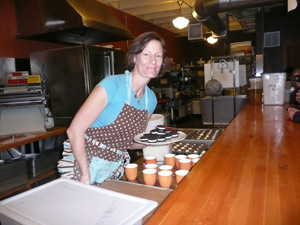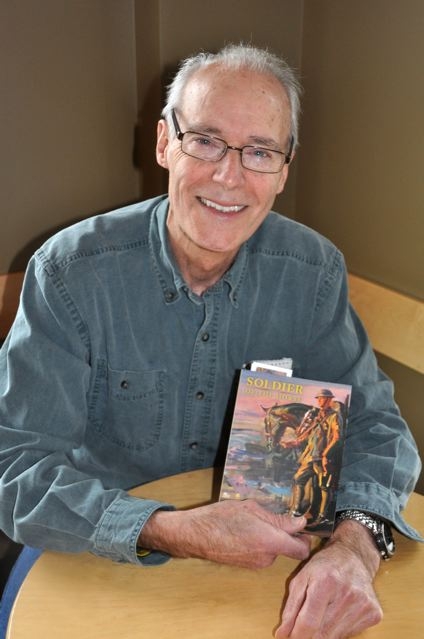by Keith Richardson
Happy Spring! Hope you’ve been getting out and away from your indoor tech for a bit!
Our last column examined generations—from young adults (dubbed the Millenials by the Pew Institute) to us (the Silent Generation—pre Boomers—and the GI generation) and the divides among us that are becoming more sharply focused by the day. We asked you to think about a likely connection between increasing use of hi-tech in all parts of society and the growing obesity rate, especially among the generations farthest apart in age.
 Age based divides moderate eventually though a combination of “promotion and attrition.” The oldest generation passes on as younger ones move up the ladder and the snapshot alters annually. No point wringing hands over the current situation, even though it harasses those struggling with the most disparate experiences of modernity. Sometimes it’s best just to accept change and move on.
Age based divides moderate eventually though a combination of “promotion and attrition.” The oldest generation passes on as younger ones move up the ladder and the snapshot alters annually. No point wringing hands over the current situation, even though it harasses those struggling with the most disparate experiences of modernity. Sometimes it’s best just to accept change and move on.
And sometimes we need to push back and hang on to what we’ve worked for. Until last month, I’d been playing with the metaphor of “tsunami of change.” But tsunamis are invariably destructive. Changes we seniors are facing are comparatively benign. For example, we can choose our course to a large degree–be active Facebookers, FB voyeurs, or FB denyers. I fall into the middle group: FB is a way to find out what friends and family too busy to use the phone or email are up to. For many, FB is the most efficient way to provided needed or wanted into to myriad contacts. On the other hand, I have no desire to “put myself out there.” An email to a handful of buddies still suffices. I don’t think the whole world needs to see my photos, know where I’m having coffee, whom I’m visiting, or where I’m travelling.
On the other hand, research shows that seniors are slowly warming to social networking. Look at the places where seniors gather, and it’s clear that for many networking is our life. On the other other hand, most of my clients would never be caught gabbing with their peers around a table in a food court or even a drop-in seniors centre. And both groups have some difficulty understanding the other. When I’ve done presentations at seniors centres where volunteerism rules, I’ve been asked, “You actually take money for what you do?” And from clients I often hear, “I tried group lessons on computers in a lab, then went home, and felt my time had not been well spent.” Different strokes for different folks.
Similarly, some seniors will welcome social networking via their computers, smart phones, iPads or other tablets, while others will persist in their contempt for the whole idea. One would hope that the choice will be based on need. Do you really require Facebook or Twitter or a blog to let the world know who you are and what you’re doing? If so, SNM—social networking media—are definitely for you. You may, however, just maintain an inactive FB page just so that you belong to the network and so that you can keep track of others who are more actively using it—like our kids and grand-kids. Or just ignore it all and tell everyone that you only respond to personal contact…. Good luck!
None of us wants to be pigeon-holed. My happiest discovery since I started MacSeniors is that folks from 50 to 90+ defy stereotyping. We’re busier than ever. We’ve all had amazing (not always happy) lives and we’re determined to keep making the best of things no matter that the golden years still yield their share of leaden moments. It’s our challenge to show the young-uns that we can still manage and grow even in trying times. We have so much potential to influence the nature and pace of change!
Starting this month, you’ll find the newsmagazine’s print column a little shorter. If you’re looking for the expanded column with references to other online sites of possible interest, this is the place.
By the way, if you’re hankering a new iPad 2, you may have to wait a bit. Demand has been over the top while there have been supply problems, in part stemming from the havoc in Japan where some key components are made (I’m reading conflicting reports on this point). As I write this, Canadian distributors are still not sure how many iPad 2s they’ll be provided with and how soon they receive their resupplies after the first ones vanish from their shelves.
Personally, I’m planning to get mine with my accumulated AirMiles, so I may be waiting for quite some time. In the meantime, my original iPad with its new OS 10.4.3 operating system will have to suffice.
Not sure if an iPad 2 is for you? Check out these link for assistance:
iPads for seniors? – Google Search
techrepublic-ipad2-who should wait and who should pass
Until next time,
Keith Richardson
www.macseniors.ca
604.777.9365

 There is a growing trend toward defined contribution pension plans. These are registered pension plans that specify the employee and employer contributions but not the amount the employee will receive at retirement. Payout amounts from these plans are based on the returns earned by their investments. If the investments perform well, you could have more income than you expect; if they underperform, you could be left short.
There is a growing trend toward defined contribution pension plans. These are registered pension plans that specify the employee and employer contributions but not the amount the employee will receive at retirement. Payout amounts from these plans are based on the returns earned by their investments. If the investments perform well, you could have more income than you expect; if they underperform, you could be left short.


 Fortified, we drove 64kms(40miles) south of Portland, to McMinnville, and the Evergreen Aviation and Space Museum and the Captain Michael King Smith Educational Institute, which is dedicated in memory of the museum founder, Capt. Michael King Smith, who was killed in 1995 in an auto accident and was also the son of Evergreen International Aviation’s founder, Delford M. Smith.
Fortified, we drove 64kms(40miles) south of Portland, to McMinnville, and the Evergreen Aviation and Space Museum and the Captain Michael King Smith Educational Institute, which is dedicated in memory of the museum founder, Capt. Michael King Smith, who was killed in 1995 in an auto accident and was also the son of Evergreen International Aviation’s founder, Delford M. Smith.


 When Bob Mackay retired he traded drafting legal briefs for crafting books. Soldier of the Horse, Mackay’s first fiction novel, arrived on his desk last week.
When Bob Mackay retired he traded drafting legal briefs for crafting books. Soldier of the Horse, Mackay’s first fiction novel, arrived on his desk last week.